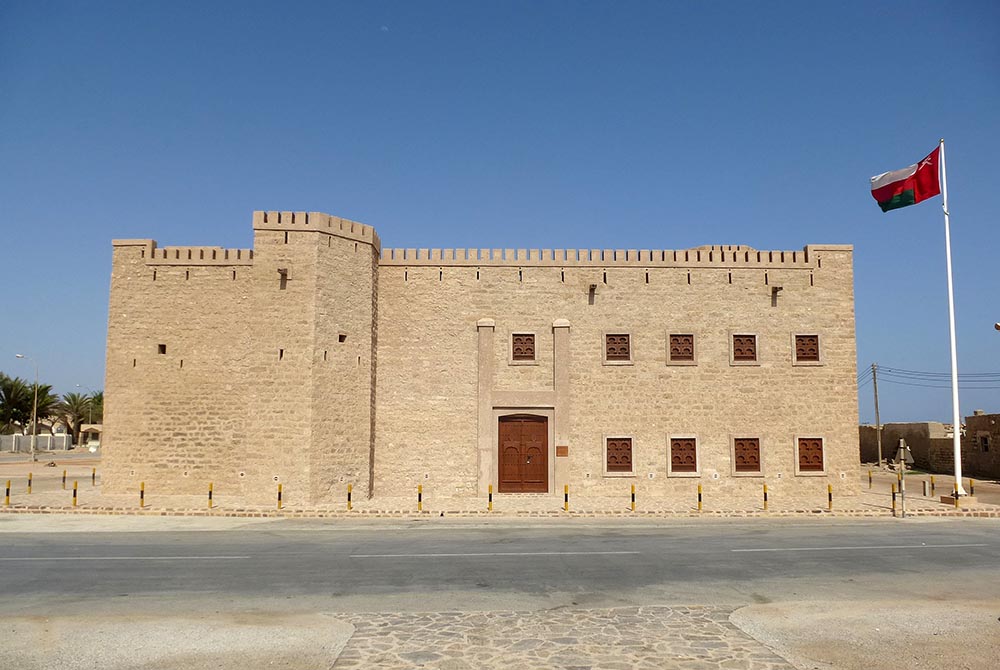Welcome to the oldest independent state in the Arab world! In the 19th century, the Oman empire stretched from present day Oman down the East coast of Africa. Nowadays, Oman is a modern country with a rich culture.
Due to Oman’s strategic location at the Arabian Gulf, the Arabian Sea, and the Sea of Oman, the country played a major role in quite a few regional conflicts. According to archaeologists, there were already human settlements in Oman during the Stone Age more than 10,000 years ago. Later on the Babylonians and the Assyrians arrived in order to control the trade route between Asia and the shores of the Mediterranean Sea.
The first mosque in Oman
With the spread of Islam in the 7th century AD, the first mosque was built: Al Midhmar Mosque can still be visited in Wilayt Samail. Jua’fer and Abd Ibni Al Jalandi, the two Omani kings, entered Islam after having received a letter from the Prophet. Masster Abu Bakr Al-Sidiq, the caliph of the Prophet, said to the Omani people the following: „People of Oman, you have entered Islam voluntarily although the Prophet has not come to your land on foot or on horse. You have not opposed him as other Arabs opposed him, and you have not called for separation or dispersion. May God unite you in benevolence.“
The Ibadite denomination established itself in the Omani region after they had fled from Basra (situated nowadays in Iraq). Ibadism is characterized e.g. by its strict, puritanical nature which has an influence on the practice of Islam in Oman. The very simple mosques have almost no decoration except around the windows. They often lack the minarets common in other Muslim countries.
Fights with the Portuguese
Ibn Masood, the first imam, was elected in 751 AD, and so the Imamata era in Oman began. It lasted 400 years. Between 1488 abd 1507 AD, the Portuguese tried to conquer Oman. However, the Omani expelled them in heroic fights.
But the leading position of Oman’s navy sparked the ire of the Portuguese again who hadn’t forgotten their shameful defeat. Fierce battles took place between the Omani and the Portuguese navy. After heavy fighting, the Portuguese were defeated.
The Omani Empire
Isolated from their Arab neighbors by the vast desert, Oman’s history took a turn for the better when the country became an economic power in the beginning of the 18th century. Oman benefited from its position on the Indian Ocean and its seafarerer knowledge gained from the Portuguese to get access to foreign lands.
In 1698, the Omani Empire expanded to the East coast of Africa, stretching from Mombasa to Kila, Zanzibar, Pemba and Bata. The Persians tried to invade the territory of Oman several times, but Oman defeated the intruders. In 1749, the Empire expanded to Gwadar (nowadays a Pakistani city situated at the mouth of the Gulf of Oman). And Oman became, subsequently, a strong trading power – based on maritime trade – in the region.
The downfall of the Empire
Under the Said dynasty, Oman was pacified and parts of East Africa were subordinated again. Oman became again an important naval power in the Indian Ocean. However, after power struggles within the dynasty and boosted by the British, Oman was divided into the Sultanate of Oman and Muscat on one hand, and the Sultanate of Zanzibar on the other hand in 1856.
This led to an economic decline because Oman lost the customs revenues from its African ports e.g. Moreover, Oman’s merchant fleet could not compete with the new European steamships, and, therefore, Oman became more and more dependent on Great Britain. The British secured exclusive rights in Oman through contracts settled in 1891 that were only abolished completely in 1958. After the British had slowly reached a collapse of Oman by the end of the 19th century by entering Oman’s overseas holdings, Oman had to retreat to its homeland.
The dark age
Sultan Said bin Taimur, the father of the deceased Sultan Qaboos bin Said, ruled from 1932 to 1970. He left the country in its backwardness and international isolation. Although already abolished for decades in other parts of the world, even slavery was maintained in Oman. The people suffered from high internal tariffs, travel restrictions and curfews. In the whole country, there were only three Koran schools for circa 100 boys, ten kilometers of paved roads, and one hospital. The Sultan ran a repressive regime. So it was forbidden to build and repair homes without permission, wear sunglasses, listen to the radio (if there were any), read books, etc.
Moving into modern times
The modern renaissance started when Sultan Qaboos bin Said, Taimur’s son, came into power: It was the beginning of a prosperous era. The revenue, predominantly from oil, has been consistently invested in the infrastructure, especially roads, hospitals and schools. Oman has transformed into a modern state within 45 years. The first day of Qaboos‘ reign, 23 July, is celebrated as Renaissance Day.
Nowadays, oil and gas represent 71 percent of the government’s revenues (2018). Tourism has also grown considerably in the last years: According to The World Travel & Tourism Council, Oman is the fastest growing tourism destination in the Middle East.
